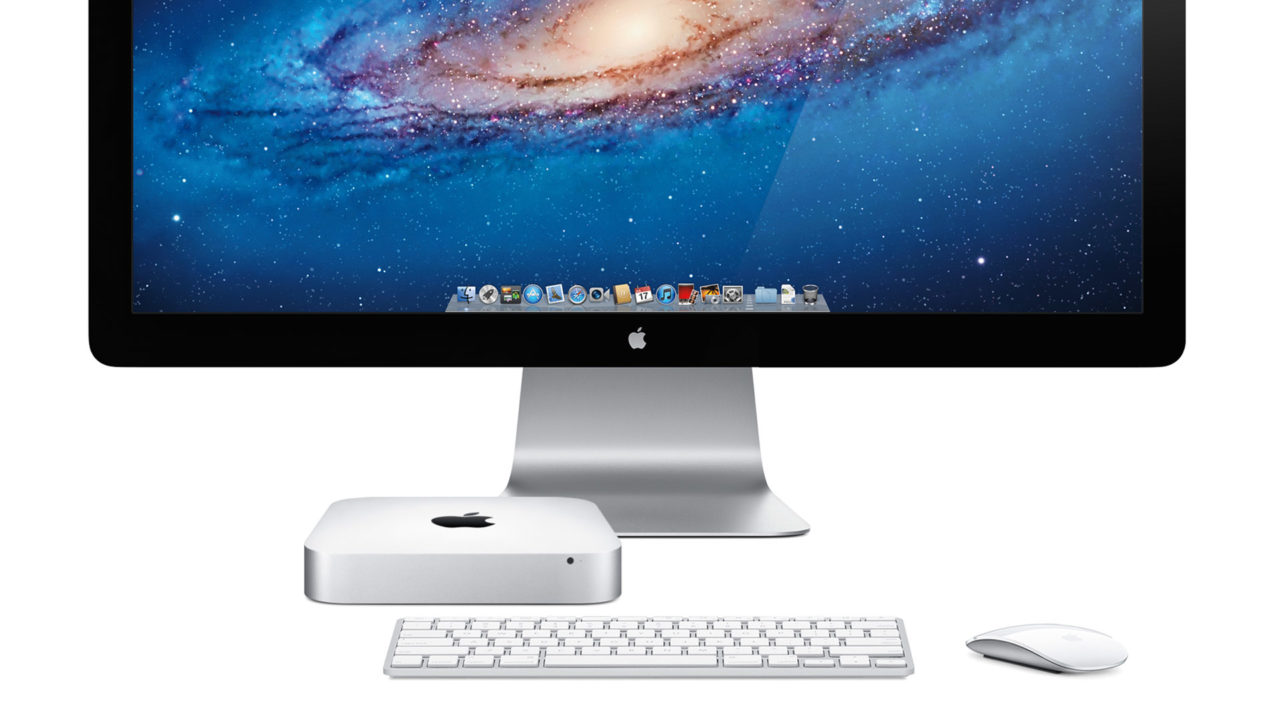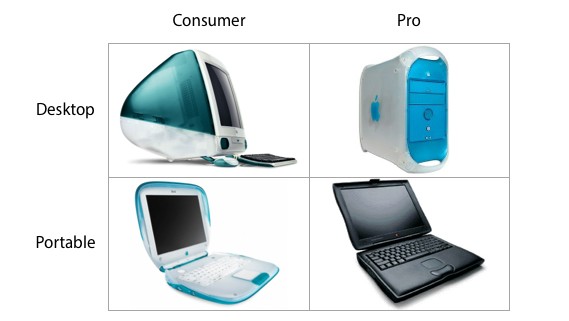Return to Basics: Should Apple Merge the Mac mini and iMac Product Lines?

Apple on Wednesday released (and then abruptly pulled) the first developer beta for OS X 10.9.4. As has become standard practice, users quickly dove into the support files of the update for any hints about future Apple products, with Pike’s Universum noticing three new plist files referencing a new “15” generation of iMac (the current iMac models are designated “14”).
Normally, this would be nothing surprising; the iMac is due for an update at some point this year, and recent rumors have suggested a modest refresh to the line utilizing Intel’s recent upgrade to the Haswell architecture, upgrades that Apple has already introduced in the MacBook Air.
But two factors have created an interesting situation that suggests that Apple’s 2014 iMac update may be more significant than originally anticipated. First, let’s take a look at the preference files discovered by Pike’s Universum in the OS X 10.9.4 beta:
Mac-81E3E92DD6088272.plist / iMac15,1 (IGPU only)
Mac-42FD25EABCABB274.plist / iMac15,n (IGPU/GFX0/Apple display with id 0xAE03)
Mac-FA842E06C61E91C5.plist / iMac15,n (IGPU/GFX0/Apple display with id 0xAE03)
Notice the difference? iMac 15,1 (the remaining models have a placeholder “n” as Apple determines the final model configurations) is missing a reference to an “Apple display.” This may normally be dismissed as a simple omission in very early beta software, and that may indeed be the case, but when you combine it with factor number two, things get interesting.
The Mac mini clearly blurs the line between between ‘pro’ and ‘consumer’
That second factor is the bizarre lack of attention that Apple has paid to the Mac mini. Last updated in October 2012, the Mac mini has gone 582 days without a refresh, missing out completely on the Haswell upgrades that graced the rest of the Mac lineup in 2013. In fact, when you omit the virtually defunct non-Retina MacBook Pro, the mini is the only Mac running a last-generation architecture.
Apple’s reluctance to update the Mac mini despite an ample selection of appropriate chips from Intel makes it likely that the company is either preparing a radical redesign — a redesign that requires, for example, Intel’s next-gen Broadwell architecture — or preparing to phase out a relatively low selling product.
But with today’s discovery of the iMac plist files in the OS X 10.9.4 beta, a third possibility emerges: Apple may be planning to merge the mini and iMac, bringing the two models under the same umbrella with a lower priced “headless” iMac.
Even as the mobile side of Apple’s business grows increasingly complex, I often think back to Steve Jobs’ Macworld New York keynote in 1999. To put the newly-unveiled iBook in perspective, Mr. Jobs displayed for the audience a two-by-two product matrix, illustrating his desire to simplify the company’s offerings in the early years of his return.
Apple, Mr. Jobs explained, would offer four simple and easy-to-understand product categories covering the needs of both professionals and average consumers: a pro desktop and a consumer desktop, a pro portable and a consumer portable. It was a simple concept, beautifully executed, that marked the beginning of Apple’s resurgence.

TekRevue’s shot at recreating Apple’s 1999 product matrix
Today, however, that original product matrix is no longer so simple. Once again dismissing the non-Retina MacBook Pro, Apple offers a pro desktop (the Mac Pro), a pro portable (the MacBook Pro with Retina Display), and a consumer desktop (the iMac), accompanied by a consumer laptop (the MacBook Air). Now, it’s true that these lines aren’t impenetrable — pros can and do find great use with the iMac and Air, and average consumers do buy the MacBook Pro in great numbers — but these divisions form an excellent starting point for explaining Apple’s product offerings to new consumers.
But where does the Mac mini fit in that matrix? Personally, I use a mini connected to the living room television to run media apps like Plex, clearly a “consumer” level of usage. But I’ve met people who use minis for video editing, scientific research, and, of course, servers. The mini clearly blurs the line between between “pro” and “consumer,” and while that’s a good thing for those who own and love their minis, it may not be so good for new customers trying to choose which Mac to buy.

skyme/Shutterstock
A simplified matrix with four primary products would make the buying decision for new customers easier. It’s true that morphing the mini into a headless iMac only shuffles the position of the same pieces on the board, but the psychological difference would definitely be felt. No longer would a consumer interested in a desktop Mac have to waffle between the iMac and mini; they’d now be directed explicitly to “iMac,” and from there the choice of model and capabilities may not weigh so heavily.
Another potential benefit of such a move could be more rapid updates. Apple has been fairly responsible with iMac updates in recent years, introducing faster models shortly after appropriate chips became available. But that has also allowed the company to get away with ignoring the mini, because they’re currently two separate products. In a world where what we now think of as the Mac mini is just another iMac configuration, Apple would be more inclined to update all models together, ensuring that those interested in such a SKU wouldn’t go years without a refresh.
As mentioned earlier, Apple quickly pulled the 10.9.4 update without explanation, so it’s unclear if the discovery of the iMac plists was somehow involved in the company’s decision. With tons of rumored announcements slated for the WWDC keynote on Monday, it’s also not clear if Apple will choose to make any iMac-related announcements next week (giant beard Jim Dalrymple doesn’t think so). But as a longtime Mac mini owner, the annexation of the mini by the iMac line is something that could be great for both Apple and its customers, and I can’t wait for this hypothesis to come true, whenever that may be.
















2 thoughts on “Return to Basics: Should Apple Merge the Mac mini and iMac Product Lines?”
If its given intel iris gpu, and wireless ac i guess it would be perfect.
Though not a Pro or a Consumer Machine, I feel my mini more geared towards supporting my mobile needs (iPhone/iPad) everywhere.
I use Mac mini for various tasks, which i find it non intrusive (and can hidden away in a corner):
1. Remote x86 Gaming (Splashtop) – iPad
2. Backup iTunes server for iPhone iPad – No need to turn on my Primary Mac / PC to sync with iTunes
3. File / Media server
4. ServeToMe / StreamToMe (like plex) .. etc etc
Its a good small machine with lots of potential. One that i will feel sad if Apple drop it.
I’ve had a few mini’s. I love ’em, but I decided to switch from the combination of a highly outdated Thunderbolt Display (2011 tech), along with an also fairly significantly outdated Mac mini with Ivy Bridge (2012 technology) to the new iMac with 802.11ac WiFi, which is awesome. Then, there’s the insane speed of the PCIe SSD configuration that I ordered, and lastly, the gorgeous display. Remember, 75% less reflection and every display is color calibrated with spectro-something-or-others, and then there’s the 2mm gap gone, which makes it that much more alive! And it’s SO light since the new design. The only thing is that it doesn’t have Thunderbolt 2. :-( Hopefully next refresh, because I want to run a 4K monitor off it and that requires Thunderbolt 2. All-in-all, I broke about even and have a much faster machine in all respects.
Anyway, the major benefits of Haswell are much less significant for a desktop like the mini and the mostly strong battery life improvements that Haswell brings are also a moot point.
My guess is that they wanted people to more strongly consider the new and much more expensive Mac Pro or at least an iMac and the Mac line in general is becoming a smaller and smaller percentage of Apple’s overall business, so I’m guessing they can afford to play games here and there, experimenting with different strategies.
1) In computing, “headless” generally means a computer without a display. So in this context, a “headless” iMac could be a similar form factor as the current mini, or a new design similar to the Mac Pro, but with less power and capabilities.
2) It’s true that Haswell doesn’t offer a huge improvement over Ivy Bridge in terms of raw CPU power (it’s about 10 to 15 percent in most benchmarks), but the Haswell GPU options are indeed much better than Ivy Bridge, and many mini owners (myself included) have been waiting (and waiting…) for that nice GPU bump.
3) Agreed that an alternative theory is that Apple is neglecting the mini (or planning to kill it off entirely) to push folks to iMac or Mac Pro.
Thanks for visiting!
Thats it, there is nothing else there. Unless somehow Apple can produce $500 iMac, there is absolutely no chance of a merge of those two types of computers. 17 years since Steve Jobs turn Apple around, year after year of new products and You guys still don’t get it.